Travel to Cairns, Australia
Jul 17-18
Begin your journey to Northern Australia, arriving in Cairns, Queensland the gateway to some of the most biodiverse landscapes in Australia.
 Private Trip Available
Private Trip Available Experience the wild heart of Northern Australia on an immersive journey from the vibrant coastal town of Cairns to the ancient landscapes of Kakadu. Begin in the lush tropical lowlands and upland rainforests of Queensland, where you’ll search for Southern Cassowaries, Victoria’s Riflebird, tree kangaroos, and a dazzling array of tropical birds. Continue north to the Daintree River for a cruise among kingfishers, herons, and crocodiles before flying west to the Top End. In the Northern Territory, explore the mangroves and monsoon forests around Darwin, then delve into the cultural and ecological wonders of Kakadu National Park, home to Aboriginal rock art, expansive wetlands, and elusive species like the black wallaroo and Rainbow Pitta. From coastal rainforests to sandstone escarpments, this expertly guided expedition offers unforgettable wildlife encounters and deep insight into Australia’s rich natural and cultural heritage.

Itinerary Updated: May 2025
| Date | Description | Lodge | Meals |
|---|---|---|---|
| Jul 17-18 | Travel to Cairns, Australia. | ||
| Jul 19 | Cairns arrival and exploration. Arrive in Cairns and start your wildlife explorations. | Harbourside Hotel, Cairns | B, L, D |
| Jul 20 | Cairns to Atherton Tablelands. Journey to the Atherton Tablelands via coastal rainforest, with a chance to see the Southern Cassowary and diverse birdlife. | Chambers Rainforest Lodges, Atherton Tablelands | B, L, D |
| Jul 21 | Atherton Tablelands. Spend the day birding across the varied habitats of the Atherton Tablelands, with excellent opportunities for mammals and endemics. | Chambers Rainforest Lodges, Atherton Tablelands | B, L, D |
| Jul 22 | Atherton Tablelands to Daintree. Continue birding in the Tablelands before heading north to the famed Daintree region. | Riverview Lodges, Daintree | B, L, D |
| Jul 23 | Daintree cruise. Cruise the Daintree River for kingfishers, herons, and crocodiles, then return to Cairns. | Harbourside Hotel, Cairns | B, L, D |
| Jul 24 | Cairns to Darwin. Fly to Darwin and explore the monsoon forests and mangroves for rare species like the Rainbow Pitta and Chestnut Rail. | The Leea Hotel Darwin, Darwin | B, L, D |
| Jul 25 | Darwin to Kakadu. Visit Fogg Dam and travel to Kakadu National Park, spotlighting for nocturnal species after sunset. | Anbinik Kakadu Resort, Kakadu | B, L, D |
| Jul 26 | Kakadu. Discover the bird-rich Mamukala Wetlands and Aboriginal rock art at Ubirr in Kakadu. | Anbinik Kakadu Resort, Kakadu | B, L, D |
| Jul 27 | Kakadu. Visit Nourlangie Rock for range-restricted species and explore cultural heritage at the Bowali Center. | Anbinik Kakadu Resort, Kakadu | B, L, D |
| Jul 28 | Kakadu to Darwin. Cruise the Yellow Water Billabong, then return to Darwin via Howard Springs Nature Park. | The Leea Hotel Darwin, Darwin | B, L, D |
| Jul 29 | Depart Darwin and fly home. Transfer to the airport and depart from Darwin | B | |
| Jul 30 | Arrive home. Arrive home with unforgettable memories of Australia’s extraordinary wildlife and landscapes. |
Cheesemans’ Ecology Safaris carefully selects leaders who are experts in their field to ensure that your experience is the best it can be. One or more leaders, assisted by other local park guides, will provide a range of expertise for your trip.
Begin your journey to Northern Australia, arriving in Cairns, Queensland the gateway to some of the most biodiverse landscapes in Australia.
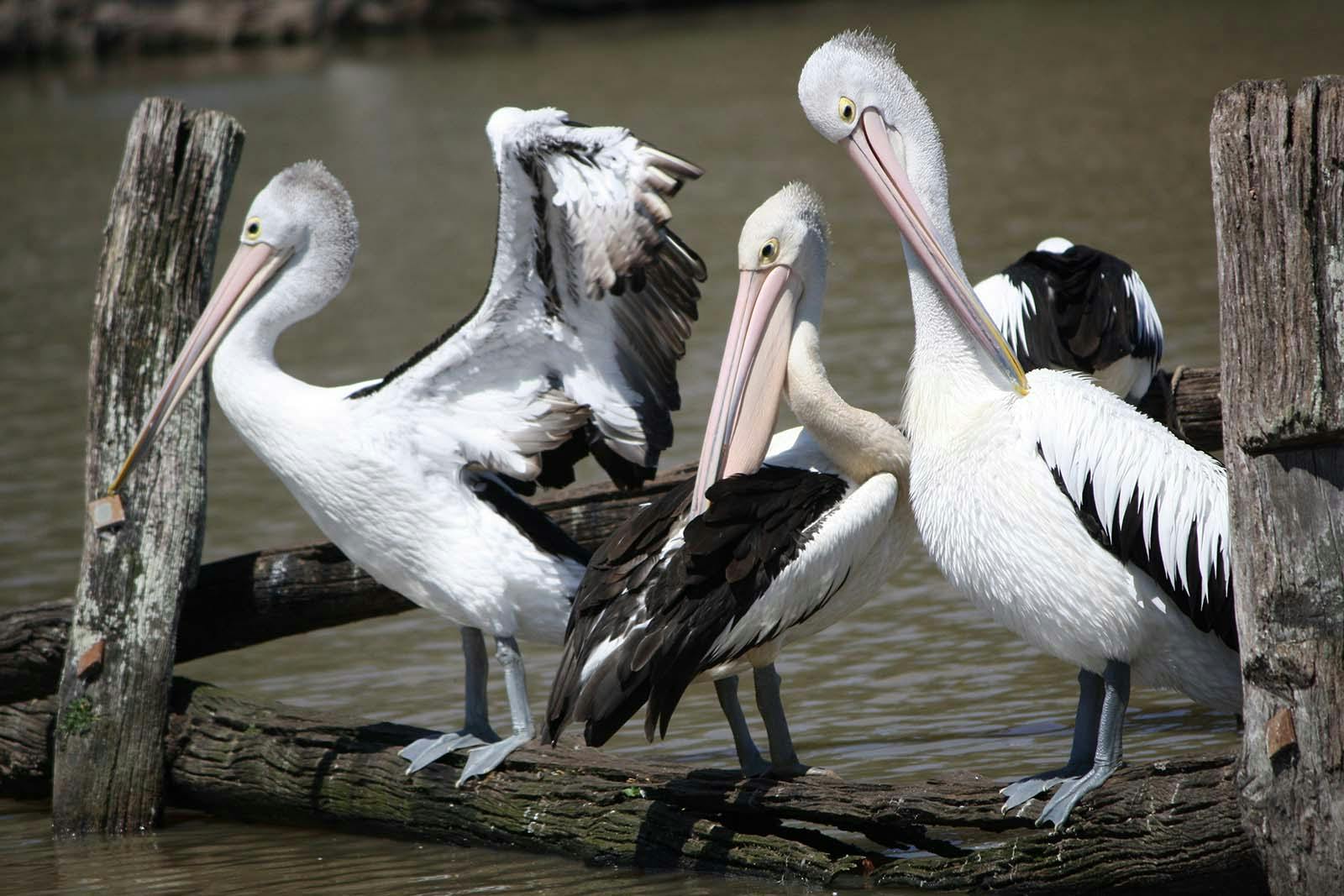
© Cat Davidson
Arrive in Cairns, a laid-back town on the Coral Sea. We will have time to stroll along the waterfront park a few steps from your hotel, to look for local specialties like Varied Honeyeater, Torresian Imperial Pigeon, Rainbow Lorikeet, Mangrove Robin, Torresian Kingfisher, Rose-crowned Fruit-dove and Sahul Sunbird. We will be able to see several different shorebirds out on the extensive mudflats, such as Far Eastern Curlew, Great Knot, Sharp-tailed Sandpiper and Terek Sandpiper. There should also be Gull-billed Tern, Australian Pelican, Eastern Osprey and maybe an Eastern Reef Egret or two.
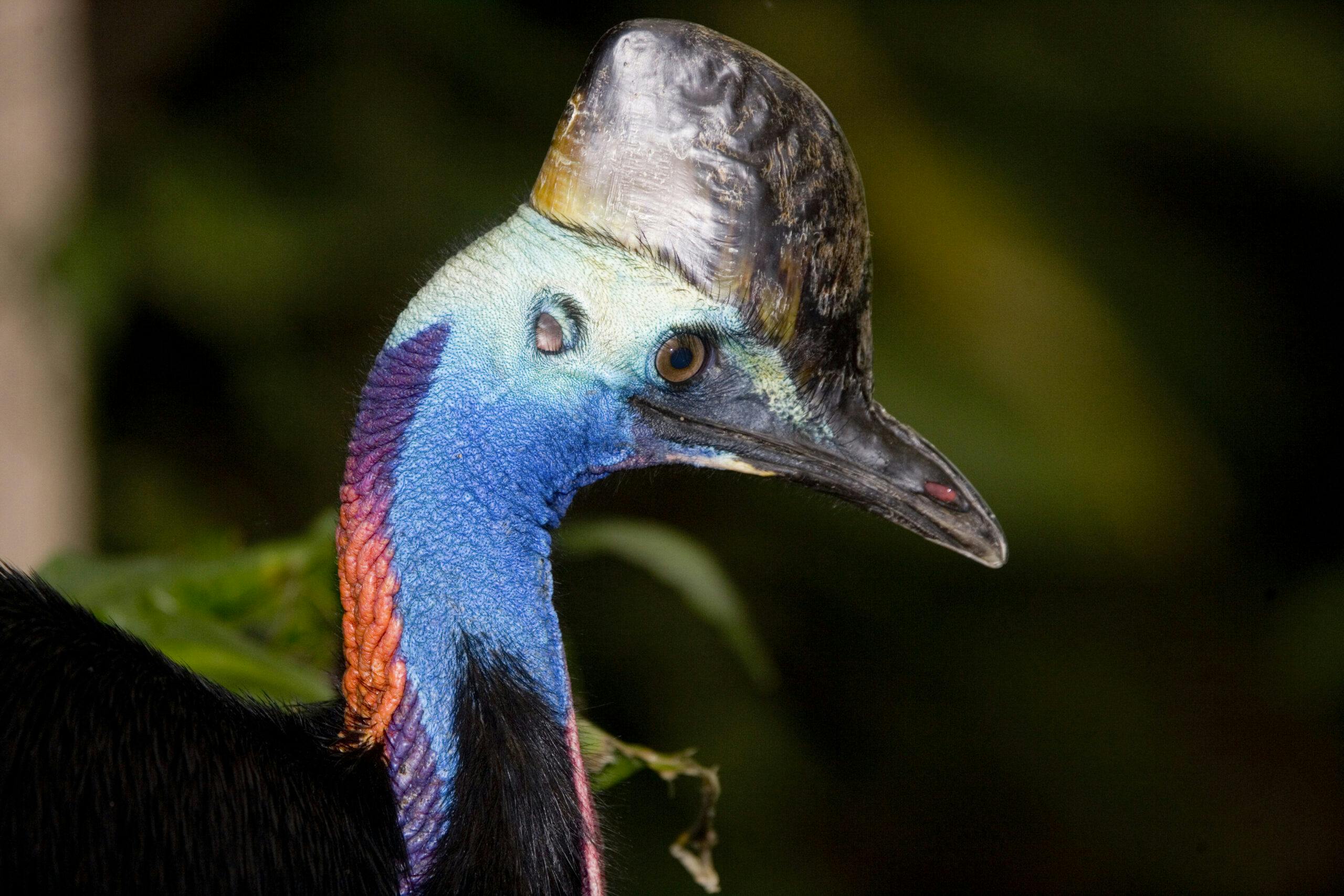
After a pre-breakfast walk, we will head south of Cairns to look for one of Australia’s most amazing birds – the Southern Cassowary. If our luck is in, we should see at least one or two of these stately ratites on the roadside at a coastal rainforest location on our way. Other birds seen here include Lovely Fairy-wren, Macleay’s Honeyeater, White-bellied Sea-eagle and Pheasant Coucal. From here we will head up towards the Atherton Tablelands, on the way picking up birds like Yellow-spotted & Graceful Honeyeaters, Australian Swiftlet, Rufous (Little) Shrike-thrush, Australasian Figbird, Rainbow Bee-eater, Metallic Starling, White-bellied Cuckoo-shrike, Mistletoebird and Masked Lapwing. Reaching our destination near the Crater Lakes National Park, we will settle in and have a good look around. Surrounded by upland rainforest, our accommodation is often visited by Victoria’s Riflebird, Spotted Catbird, Grey-headed Robin, Barred Cuckoo-shrike, Wompoo Fruit-dove, Superb Fruit-dove, Pale-yellow Robin, Scarlet Myzomela, Eastern Spinebill, Red-browed Finch and Olive-backed Oriole.
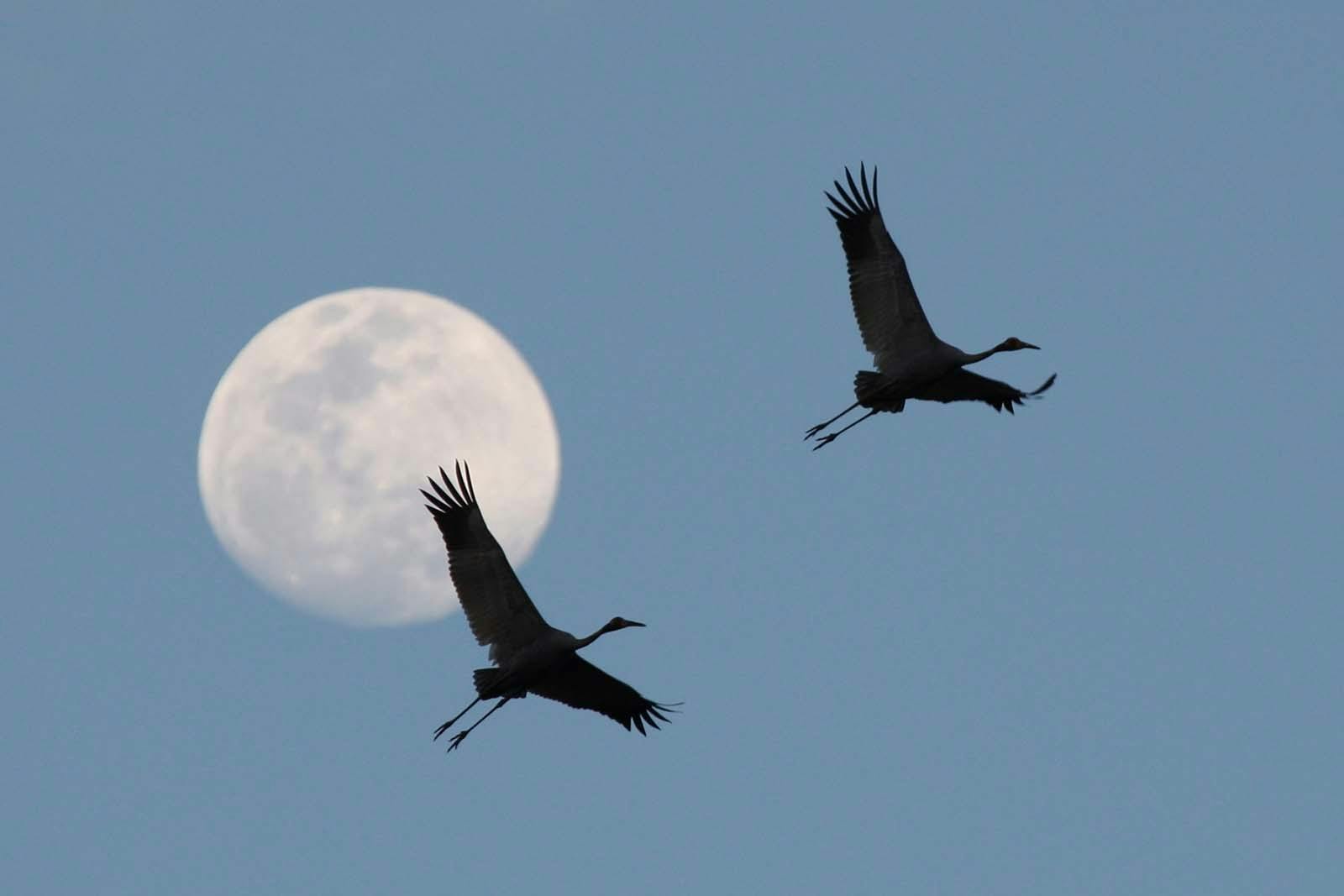
© Bob Lewis
With this as our base for the next three days, we will explore the wide variety of habitats that are within our reach here on the Atherton Tablelands. With upland rainforest, tropical savannah woodlands, grassland and agricultural fields, wetlands, and swamps to explore, we will be looking for birds like Brolga, Sarus Crane, Great Crested Grebe, Plumed Whistling-Duck, Nankeen Night-heron, Royal and Yellow-billed Spoonbill, White-necked Heron, Black-necked Stork, Buff-banded Rail, White-headed Pigeon, Pacific Baza, Spotted Harrier, Lesser Sooty Owl, the rainforest-inhabiting form (subsp lurida) of Australian Boobook, Tooth-billed Bowerbird, Fernwren, Bridled Honeyeater, Atherton Scrubwren, Fairy and Brown Gerygones, Mountain Thornbill, Chowchilla, Bower’s Shrike-thrush, Double-eyed Fig-Parrot (Wet Tropics subsp macleayana), Black-faced, Pied, Spectacled and White-eared Monarchs, Shining Bronze-cuckoo, Fan-tailed Cuckoo, and Grey-headed Robin.
We will have a great chance of seeing a range of mammals, including Striped Possum, Krefft’s (Sugar) Glider, Green Ringtail Possum, Long-nosed Bandicoot, Musky Rat Kangaroo, Lumholtz’s Tree Kangaroo, Red-legged Pademelon, Agile Wallaby, and Giant White-tailed Rat. The prehistoric-looking Boyd’s Rainforest Dragon also occurs here.
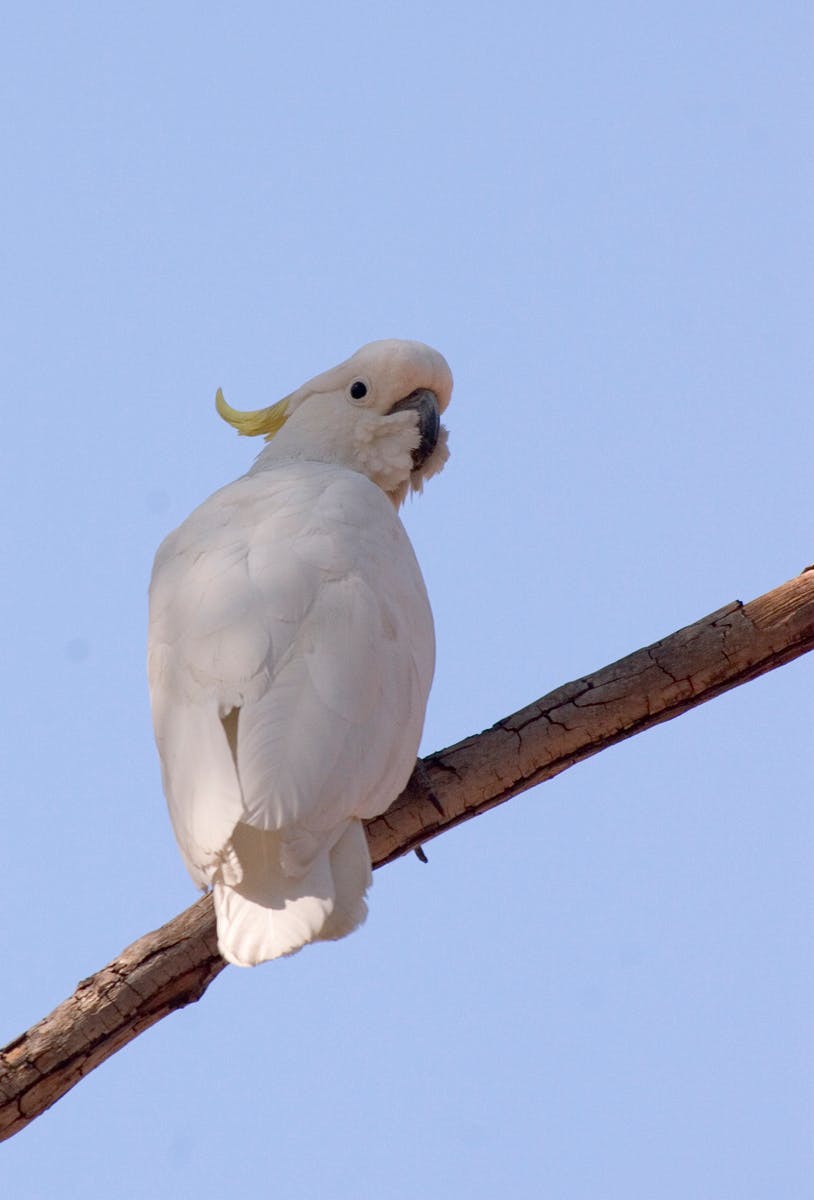
After a morning’s birding in the rainforest looking for any bird species we may still be missing, we will leave the higher altitude rainforests and head north to the Daintree River region, via a range of open woodland habitats and tropical savannahs. Birds we hope to connect with today include Australian Bustard, Black-necked
Stork, Red-tailed Black-Cockatoo, Sulphur-crested Cockatoo, Squatter Pigeon, White-throated Honeyeater, Grey-crowned Babbler, Noisy & Little Friarbirds, White-throated Gerygone, Red-winged Parrot, Great Bowerbird, Cotton Pygmy-goose, Pale-headed Rosella, Blue-winged Kookaburra and Green (Yellow) Oriole. Our destination for the evening will be the famous Daintree area.
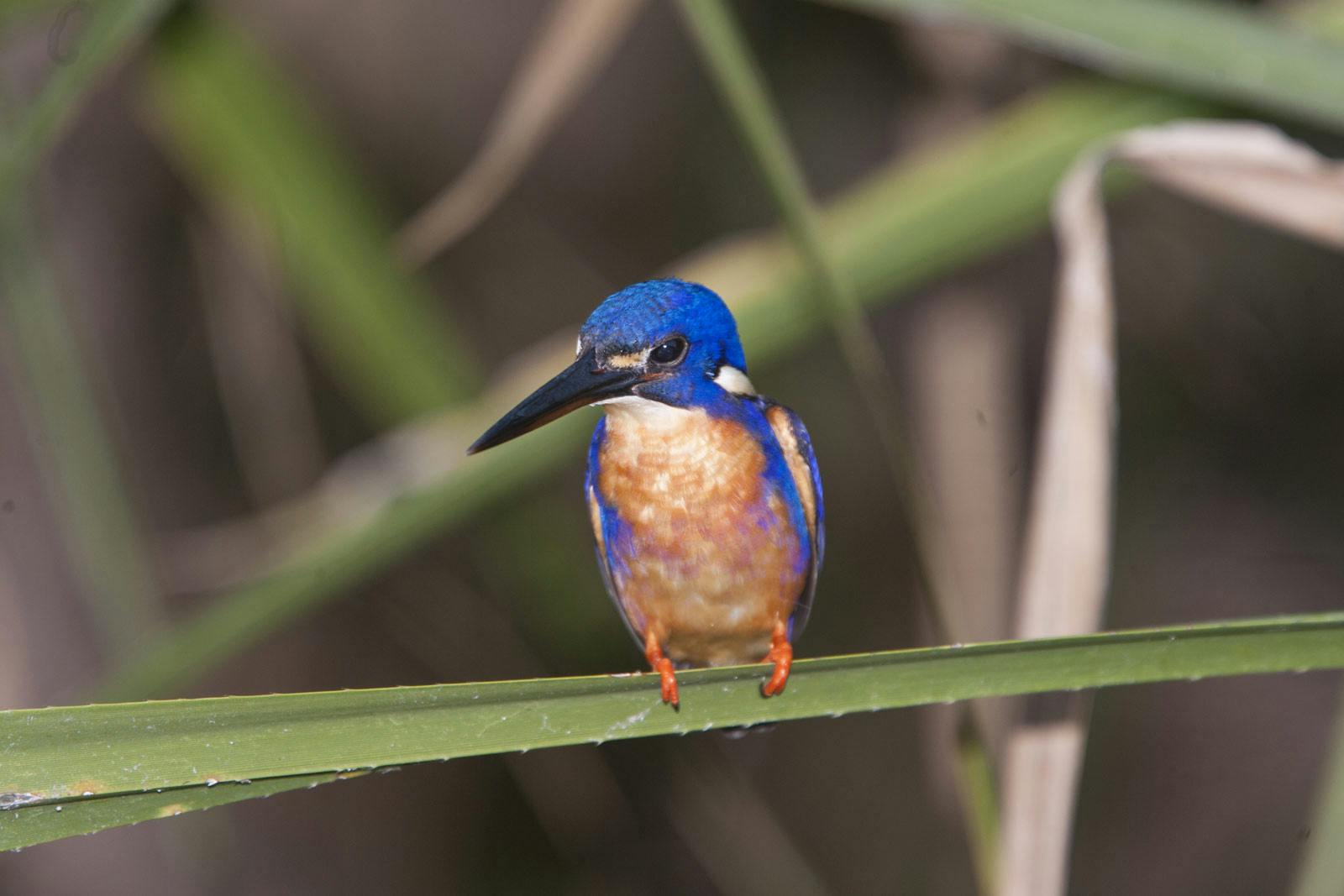
Enjoy a boat cruise on the Daintree River, where we will hopefully catch up with Azure and Little Kingfisher, Large-billed Gerygone, Black Bittern, Pacific Baza, Varied Triller, Shining Flycatcher, Chestnut-breasted Mannikin, Brown-backed Honeyeater, and Fairy Martin, as well as a chance of the rare and localized Great-billed Heron. Additional species we may see in the area include Bar-shouldered Dove, Pacific Koel, Papuan Frogmouth, Scaly-breasted Lorikeet, Hornbill (Helmeted) Friarbird, Dusky Myzomela, and White-breasted Woodswallow. Reptiles to see include saltwater crocodile, amethystine python, and common tree snake. We will then make our way back to Cairns where, depending on what species we have yet to see, we will spend the rest of the afternoon exploring.
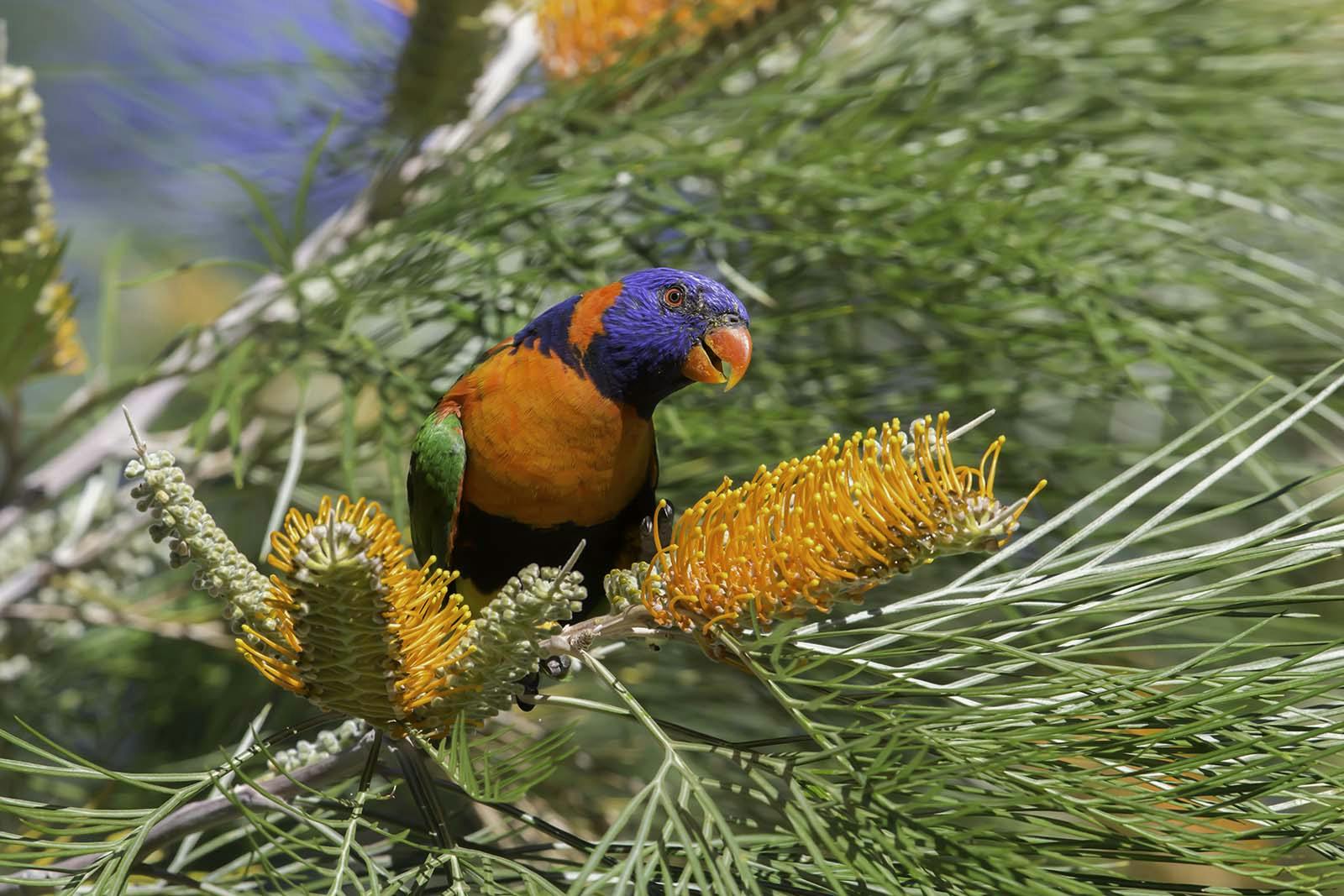
© Andrew Browne
Today we will fly from Cairns to Darwin, capital of the Northern Territory and Australia’s northernmost city. We will spend some time in the mangrove and monsoon forests looking for the elusive Chestnut Rail, Rufous Owl, Orange-footed Scrub-fowl, Rose-crowned Fruit Dove, the striking Rainbow Pitta, Forest Kingfisher, Red-headed Myzomela, Mangrove Robin, Green Oriole, Blue-faced Honeyeater, Green-backed Gerygone, Spangled Drongo, Blue-winged Kookaburra, Great Bowerbird, Pheasant Coucal, Pied and Silver-backed Butcherbird, and Red-collared Lorikeet. Little red flying-fox and agile wallaby are possible mammal highlights.

© Pat Kelly
This morning, we start the day with a visit to Fogg Dam, a well-known site that is an excellent area for waterbirds including Magpie Goose, Green Pygmy-goose, Pied Heron, Glossy Ibis, the stately Brolga, White-browed Crake, and the quirky Comb-crested Jacana. En route to Kakadu, we will enjoy a stop at the Adelaide River crossing for lunch, where we may see Mangrove Golden Whistler and a variety of flycatchers like Shining, Leaden, Restless, and Broad-billed Flycatchers. On arrival in Kakadu, we will enjoy a stroll to a local lagoon not far from our cabins to take in the sunset. After dinner, we may enjoy some spotlighting for nocturnal species such as Barking Owl, Tawny Frogmouth, Large-tailed Nightjar, and Australian Owlet-nightjar.
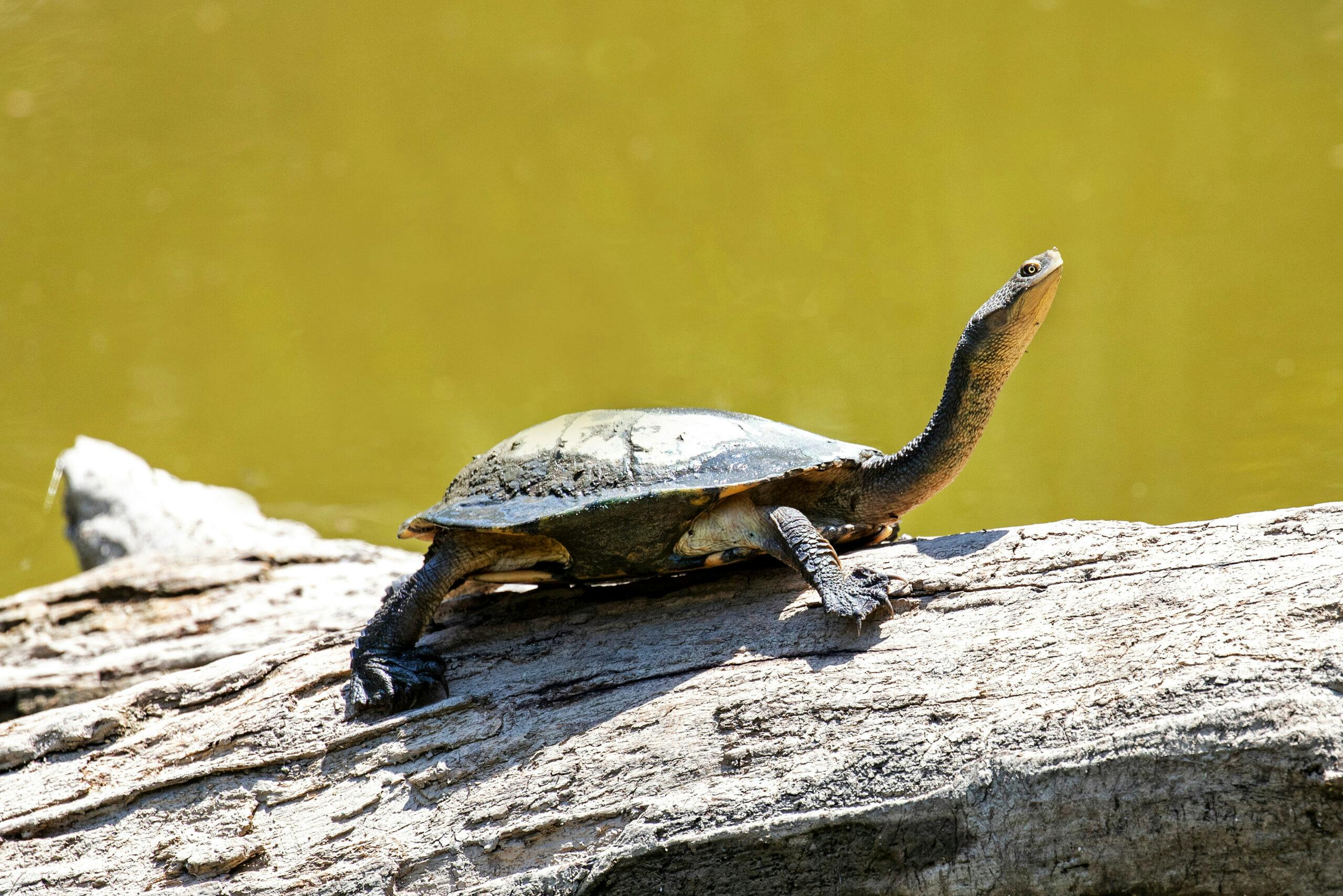
In the morning, we will make a stop at the impressive Mamukala Wetlands, where, if conditions are right, we can enjoy thousands of birds of many species. Plumed and Wandering Whistling-ducks, Radjah Shelduck, Black-necked Stork, Magpie Goose, and Green Pygmy-goose are possible bird highlights, and Arafura File Snakes and Long-necked Turtles can also be found here, a traditional hunting ground for the local Indigenous people. There will also be an option to visit Ubirr, a site of rock outcrops in Kakadu that is home to some impressive Aboriginal rock art. The art depicts creation ancestors and animals of the area, including several fish and turtle species, wallabies, and possums. In the late afternoon, Wilkin’s rock wallabies (a relatively recent split from Short-eared rock wallabies) may be seen emerging from their shelters. Bird specialties found here include Sandstone Shrike-Thrush, Chestnut Quilled Rock Pigeon, Partridge Pigeon (red-eyed form), and Rufous-throated Honeyeater.

© Cheesemans' Ecology Safaris
This morning, we will make an early visit to Nourlangie Rock, where we have a reasonable chance of seeing the range-restricted black Wwllaroo, Banded Fruit-dove, White-lined Honeyeater, Little Woodswallow, Black-tailed Treecreeper, and Helmeted Friarbird. Elsewhere throughout the park, we’ll hope to connect with tropical woodland species like Partridge Pigeon (red-eyed form, subsp smithii), Rainbow Bee-eater, Black Bittern, Long-tailed Finch, and both Rufous-banded and Rufous-throated Honeyeaters. There is a reasonable chance of spotting a Red Goshawk in Kakadu as well, so we’ll need to scrutinize the skies at all times. We’ll spend the heat of the day in the Jabiru area of Kakadu, which will include a visit to the Bowali Information Centre, where an interpretive walk-through display explains in some detail the cultural heritage and natural history of the Gagadju (Kakadu) region. The Bininj-Mungguy Indigenous culture dates back tens of thousands of years, and there are some fascinating insights there at the center; the surrounding grounds provide a good chance to see a range of birds. After dinner, if we’re feeling energetic, we can spotlight for mammals like Black-footed tree-rat and savannah (sugar) glider.
We will take a morning cruise on Yellow Water Billabong, an impressive wetland of channels, swamps, and floodplains that is a delight to explore and is home to plenty of crocodiles and a variety of waterbirds, including Nankeen Night-heron, Black-necked Stork, Little Kingfisher, and Purple Swamphen. Raptors such as White-bellied Sea-eagle and Whistling and Black Kites are also commonly seen here, and we will spot plenty of saltwater crocodiles in the water and on the banks. We will then enjoy a last look around Kakadu before making our way out of the park and heading back to Darwin. On the way back, we will visit Howard Springs Nature Park, where large fish such as barramundi and reptiles like yellow-faced turtle and Mertens’ water monitor can be viewed. We will also be searching for the shy Rainbow Pitta. We will return to Darwin in the late afternoon.
After breakfast, transfer to Darwin Airport, concluding your Northern Australia wildlife expedition.
Return home, bringing with you lasting memories of Australia’s unique wildlife, dramatic landscapes, and once-in-a-lifetime wildlife encounters.
| Type | Cost Per Person |
|---|---|
| Trip Cost, double occupancy | $8,750 |
| Single Supplement | $1,600 |
Share the Experience – Earn Travel Credit
Know someone who would love this trip? Refer a friend and you’ll both benefit—you get credit toward a future adventure, and they receive a discount on their first trip with us. See how our Referral Program works ›
Costs are per person, double occupancy, not including airfare singles extra. See Included and Not Included sections for more details.
| Payment | Due Date | Amount Per Person |
|---|---|---|
| Deposit | Due now to reserve your space | $500 |
| Final | January 19, 2027 | Remaining Balance |
Payments are due based on the schedule above. All reservations require a deposit to confirm reservation of your space.
Until the Final Payment due date, deposits are refundable except for a cancellation fee of $150 per person, which can be applied toward another trip if reserved within six months of the cancelled trip’s departure date. Cancellations are non-transferrable. No refunds are given after the Final Payment due date.
July is generally pleasant and ideal for outdoor activities, as it falls during the region’s dry season. In Queensland’s Wet Tropics, including Cairns and the Atherton Tablelands, temperatures range from 73–79°F (23–26°C) during the day and 50–59°F (10–15°C) at night, with low humidity and little rainfall. In the Northern Territory’s Top End, including Kakadu National Park, days are warm and sunny with highs around 86°F (30°C), while evenings are cooler and comfortable. This time of year offers clear skies, minimal rain, and excellent conditions for wildlife viewing, as animals often gather near water sources.
This trip is best suited for travelers with a moderate level of fitness. Most days involve guided walks, wildlife excursions, and spotlighting outings that require participants to be comfortable walking on uneven trails, sometimes for extended periods. The itinerary includes long immersive days in nature with early starts to maximize wildlife sightings, so a good level of stamina and enthusiasm for full days in the field is important.
You’ll be exploring a range of habitats, from rainforest to savannah and wetlands, often in warm and humid tropical conditions. While not physically strenuous, the trip does require reasonable mobility and a readiness to be active and outdoors throughout the journey.
Detailed logistical information is included in the Trip Planning Materials we will send you.
Flights you book
Flights we book
Our company ethos has always regarded conservation as inseparable from responsible tourism. We struggle with the dilemma that traveling worldwide expends climate-changing carbon. However, we wholeheartedly believe that traveling with us will cultivate your passion for conserving our beautiful world while stimulating each destination’s local economy. We encourage you to explore the various ways in which Cheesemans’ operates within this context:
Read our current Terms and Conditions.
 TBD
TBD